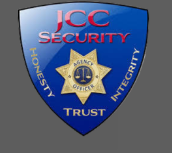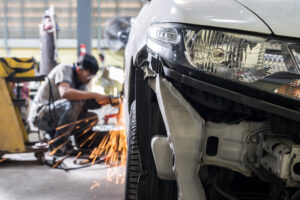Key Factors to Consider for Site Safety Management
Overview
Have you ever looked at a construction site and thought, “Whoa, that looks risky”? It’s true! Construction zones can be dangerous. There are heavy machines, materials everywhere, and people hustling around. Keeping everyone safe is a big deal. And trust me, it matters for the community, too. Safety management is essential to reduce risks and protect everyone involved.
What Is Site Safety Management?
So, what’s site safety management all about? It’s the process of keeping a construction site safe. This includes making rules, checking equipment, and ensuring everyone knows what to do. Think of it as a construction site security net for everyone on site.
Advantages of Effective Safety Management
Now, let’s talk benefits. Why should you bother with safety management? Here are a few reasons:
- Fewer Accidents: A solid plan helps reduce injuries and accidents. That’s a win!
- Boosts Productivity: When workers feel safe, they can focus on their tasks. Less stress means more work gets done.
- Builds Reputation: A site known for safety attracts skilled workers. Plus, it looks good in the community’s eyes.
- Keeps You Legal: Following safety regulations means avoiding fines. No one likes unexpected bills!
- Saves Money: Fewer accidents mean lower insurance costs. Who doesn’t want to save a few bucks?
Types of Safety Measures
Let’s break down the types of safety measures you should think about:
- Personal Protective Equipment (PPE): Everyone should wear hard hats, gloves, and safety glasses. It’s non-negotiable.
- Safety Training: Regular training sessions are a must. Workers need to know how to handle tools and respond to emergencies.
- Signage and Barriers: Use clear signs and barriers to keep folks safe. They guide people and prevent accidents.
- Emergency Plans: Have a plan for emergencies. Know how to evacuate and who to contact.
When to Review Safety Management Plans
How often should you check your safety plans? Regular reviews are key. Aim for at least every three months. But if anything changes—like new equipment or laws—take a look sooner. Safety first!
Preparing for Site Safety Management
Before diving into safety management, get ready. Here are some handy tips:
- Conduct Risk Assessments: Identify potential hazards. What could go wrong? Knowing is half the battle.
- Develop a Safety Plan: Create a tailored plan for your site. Think of it as your safety blueprint.
- Involve Workers: Get input from your team. They know the site best, and their ideas matter.
Gathering Your Supplies
Ready to put your plan into action? You’ll need some supplies:
- PPE: Stock up on personal protective gear for everyone. No one should be without it.
- Safety Training Materials: Provide training resources. Manuals and online courses can be super helpful.
- Safety Signage: Invest in clear, visible signs. They keep everyone informed.
- First Aid Kits: Make sure there are well-stocked first aid kits on site. You never know when they’ll be needed.
Safety Management Techniques
Once you’re all set, it’s time to implement your safety measures. Here’s how:
- Regular Safety Meetings: Hold meetings to discuss safety concerns. Keep everyone in the loop.
- Daily Checklists: Use checklists to ensure safety measures are followed every day. A little routine goes a long way.
- Incident Reporting: Set up a system for reporting accidents. Analyzing incidents helps improve safety measures.
- Feedback Mechanism: Encourage workers to report unsafe conditions. Open communication is vital.
Safety Equipment
Investing in safety gear is essential. Here are some must-haves:
- Safety Helmets: Protect against falling objects. They’re a no-brainer.
- High-Visibility Vests: Make sure everyone is seen, especially in busy areas. Safety first!
- Fall Protection Gear: If your workers are high up, fall gear is a must. Safety is paramount.
- Fire Extinguishers: Keep extinguishers handy. Accidents happen, so be prepared.
Additional Considerations for Safety Management
A few more things to keep in mind:
- Weather Conditions: Watch the weather. Rain or wind can create hazards. Adjust schedules accordingly.
- Equipment Maintenance: Regularly check and maintain tools and machines. Ensure everything is in good shape.
- Community Safety: Think about how your work affects the neighborhood. Good relations matter.
Safety Tips for Construction Sites
Let’s wrap it up with some practical tips for keeping the site safe:
- Promote a Safety Culture: Encourage everyone to prioritize safety. A united front makes a difference.
- Regularly Update Training: Keep training fresh and relevant. Adapt to new risks and equipment.
- Ensure Clear Communication: Maintain open lines of communication. Everyone should feel comfortable raising concerns.
DIY vs. Professional Safety Management
Wondering whether to go it alone or hire help? If you’re not sure about safety management, consider hiring a pro. They have the experience and know-how to create a solid safety plan. But if you’re confident in your skills, involve your team. It can be rewarding and save money.
Conclusion
In Miami, FL, construction site security on construction sites is a big deal. By following these tips, you can create a safer work environment. Prioritizing safety protects everyone and helps your project succeed. Remember, a safe site is a successful site!














Post Comment